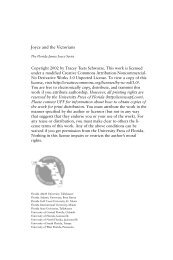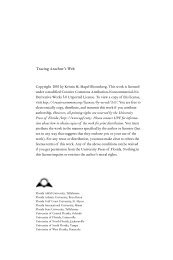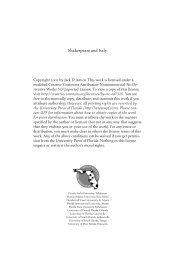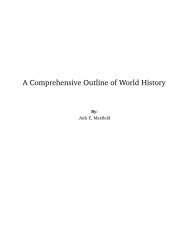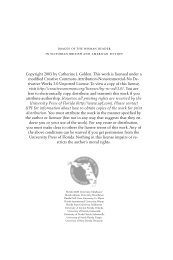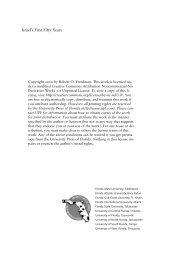Bernard Shaw's Remarkable Religion: A Faith That Fits the Facts
Bernard Shaw's Remarkable Religion: A Faith That Fits the Facts
Bernard Shaw's Remarkable Religion: A Faith That Fits the Facts
You also want an ePaper? Increase the reach of your titles
YUMPU automatically turns print PDFs into web optimized ePapers that Google loves.
Ethics, Economics, and Government 161<br />
Economic Rent<br />
Even if <strong>the</strong> market were competitive in <strong>the</strong> way imagined by free market<br />
<strong>the</strong>orists, things would not be so simple, for Supply, like Utility, has its<br />
margins. Just as Utility varies with individuals and with circumstances, <strong>the</strong><br />
efficiency of production varies. In many cases, as supply increases, efficiency<br />
drops. Nineteenth-century thinkers, including Shaw, assumed that<br />
this was virtually always true. Their reasoning was simple: imagine an<br />
uninhabited fertile valley; <strong>the</strong> first settlers will take <strong>the</strong> best, most productive<br />
land, and as o<strong>the</strong>rs move in <strong>the</strong>y will be forced to occupy increasingly<br />
less productive land. In competitive circumstances, demand tends to drive<br />
prices down to <strong>the</strong> level at which <strong>the</strong> producers no longer regard it worthwhile<br />
to produce. If <strong>the</strong> land were all equally productive, that would be<br />
essentially subsistence level (assuming <strong>the</strong> farmers had no o<strong>the</strong>r employment<br />
opportunities). But in this case <strong>the</strong> price is driven down to <strong>the</strong> subsistence<br />
level at <strong>the</strong> least productive farms. By superimposing a graph of price<br />
and supply (margin of utility) on one showing cost and production (margin<br />
of supply) we determine <strong>the</strong> actual exchange value in a particular market:<br />
<strong>the</strong> point where marginal utility meets <strong>the</strong> margin of supply.<br />
price<br />
cost<br />
price/supply<br />
cost/production<br />
production/supply<br />
The unbroken line, showing <strong>the</strong> price (<strong>the</strong> vertical dimension) at a given<br />
level of supply (determined by <strong>the</strong> Final Utility and represented by <strong>the</strong><br />
horizontal dimension) tells us that <strong>the</strong> price will come down gradually<br />
until <strong>the</strong> market becomes glutted, when it begins to drop precipitously. For<br />
<strong>the</strong> broken line <strong>the</strong> vertical represents <strong>the</strong> cost of production at <strong>the</strong> least<br />
efficient sites and <strong>the</strong> horizontal <strong>the</strong> level of production. It tells us that (in<br />
this case) inefficiency rises more or less geometrically as more land is<br />
brought into production. As production and supply are commensurate, a<br />
horizontal line drawn on <strong>the</strong> graph anywhere to <strong>the</strong> left of <strong>the</strong> point at



